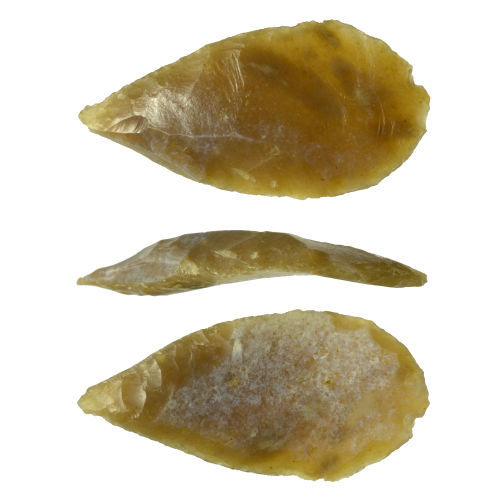 The start of the Neolithic is marked by the adoption of agriculture and the move away from a mobile, hunter-gatherer way of life to a more settled existence. In Essex, this change to a farming way of life takes place around 5,000 years ago, with evidence from archaeological excavations indicating the presence of Neolithic communities who were cultivating cereals, rearing domesticated livestock and producing pottery.
The start of the Neolithic is marked by the adoption of agriculture and the move away from a mobile, hunter-gatherer way of life to a more settled existence. In Essex, this change to a farming way of life takes place around 5,000 years ago, with evidence from archaeological excavations indicating the presence of Neolithic communities who were cultivating cereals, rearing domesticated livestock and producing pottery.
Much of the archaeological evidence from this period is surface finds such as polished flint axeheads, arrowheads and pottery. A fragmentary Neolithic pot was found while digging out an old drain at Layers-de-la-Haye
An enclosure visible as cropmarks at Mount Bures has been interpreted as a possible Neolithic ceremonial site.
In Colchester, excavations on Culver Street in the 1980s revealed a late Neolithic pit containing large fragments of Neolithic Grooved Ware pots and a large water-worn stone, possibly a rubbing-stone from a quern. This was considered by the excavators to be a ritual deposit , suggesting an occupation site nearby. Further mid- to late-Neolithic pits were recorded during excavations at the Garrison Urban Village in 2004.